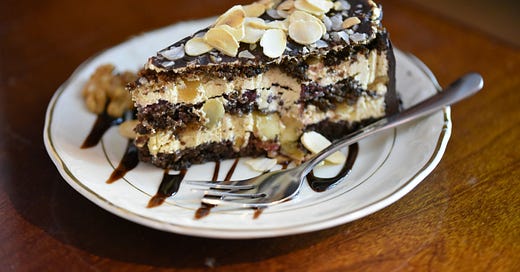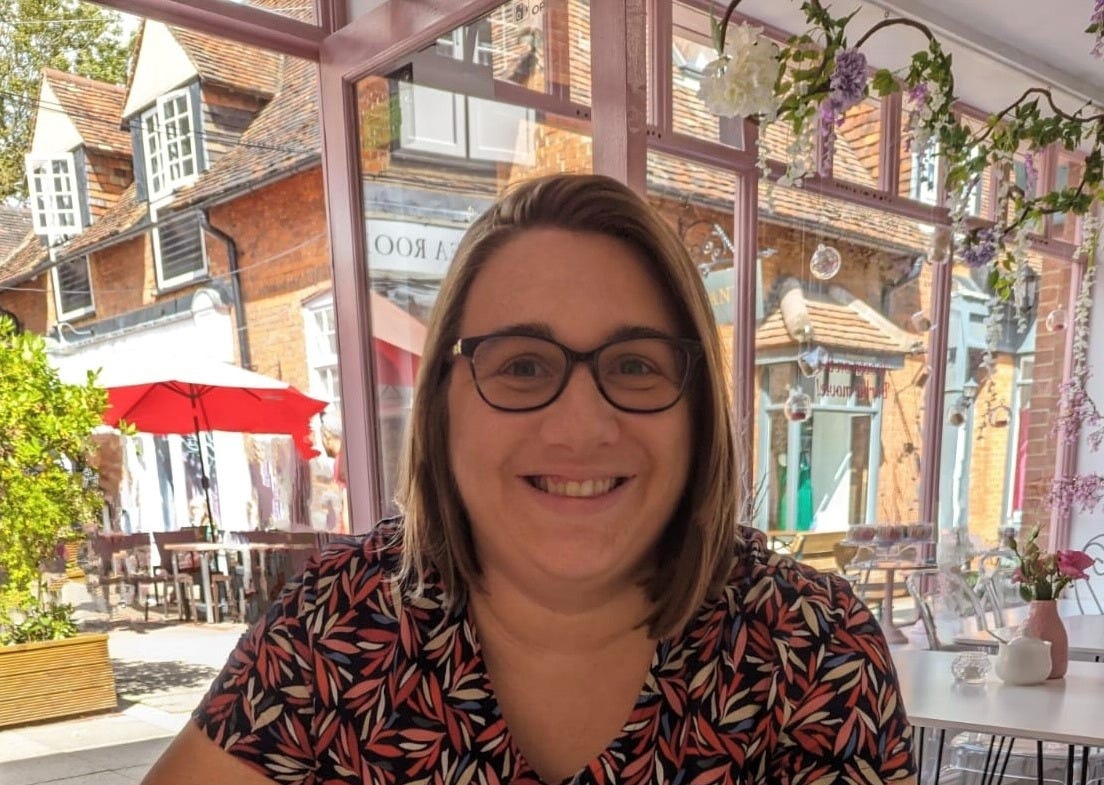A piece of cake? Getting the most out of seasonal content
Guest Post from Sian Shaw, Digital Content Manager, Westminster Abbey
Afternoon team content,
As the nights draw in and I have to remember where I put last year’s anti-freeze it seems like a good time to think about SEASONAL content in the cultural sector.
It was fascinating to talk to Sian at Westminster Abbey about how they – as an institution – plan content around liturgical seasons. Let’s face it, the Church has ‘content’ – celebrations, traditions, collective sources of meaning – around our seasons going back centuries. But how do you translate that into digital content?
Sian Shaw – Digital Content Manager at the Abbey – tells us more.
(scroll to the bottom for cake photo)
What does seasonal content mean to you? For many museums and heritage sites, a season means an exhibition – a chance for a few months to deeply focus on one area or theme. For us at Westminster Abbey, we might be talking about liturgical seasons (such as Advent and Christmas) or thematic public engagement seasons (such as our current focus on Poets’ Corner in Voice and Verse).
So here is the content creator’s conundrum. We know that seasonal digital content is important: it can raise awareness, it can drive traffic to your channels and it can convert into ticket sales. It’s important in its own right as a form of engagement as well as sparking an onward journey. Ultimately, it puts whatever the season is on the digital map. However, it’s also some of the most time-consuming, resource-sucking pieces of content that you’ll be creating – along with all the other projects and programmes sitting on your to-do list.
So, what can you do to make sure you make the most, and get the most, out of your seasonal content? And what has that got to do with cake?
Introduce content efficiency
In the last year, I’ve worked on the big two Christian liturgical seasons and three thematic seasons – from links with France to the natural world to 700+ years of poets. That’s involved working across different medium (video, podcast, written – in various lengths) to create content to suit many different channels (website, YouTube, streaming platforms, Facebook, X, Instagram and LinkedIn) for multiple audiences (from casual tourists to culture seekers, from school teachers to families and many more) while working collaboratively across many departments too. Picture one of those detective investigation boards with all the string connecting everything together, and you’ve got a sense of how my brain looks most of the time.
That’s where content efficiency comes in. In physics (stay with me), efficiency is described as the relationship between the amount of energy put into a process and the amount of useful work it produces. Seasonal content done well is exactly that. What started as a bit of an experiment is now something at the forefront of my mind when planning any new season. Yes, I want that piece of content to do that job on that channel – but after all the research and hard work has gone into it, what else can I get that piece of content to do? I’m now always thinking about how many other ways I can cut that metaphorical cake.
Content efficiency is also about letting the audience decide how they define valuable engagement, and not judging one engagement as more or less important than another. I often think about Sarah Winters book Content Design and the bold statement “it’s not dumbing down, it’s opening up” in this context. I don’t know of a cultural organisation who isn’t trying to open up in some way or another. If someone chooses the 20-second engagement over the 3-minute version of the same film, then that’s the way they want to engage. Great! They may even be someone who hasn’t engaged with you before, who is exercising their choice not to spend the 3 minutes with you. Content efficiency thrives in this environment – you haven’t changed what you are saying, you’ve just providing it in multiple ways.
For Lent and Easter this year, 19 new pieces of content were created – lots of those were video and audio, as particularly strong areas for engagement. I turned those 19 new pieces of content into over 70 new pieces of content. Shorter clips that still worked on their own were sliced from longer videos, image slideshows were created to reuse audio content and a plethora of still images in multiple dimensions were taken and tested against each other, to further understand which visual prompts our audiences respond to. This allows us to know what works well, and even more importantly what isn’t quite landing, quicker than ever – and use that knowledge in forward planning.
Master hooks and storytelling
It’s well documented that stories are the best ways for humans to absorb and retain information, and that’s why it’s a method used all the time. In Anna Faherty’s Writing Online and Audio Stories, she says “I tell stories about X for Y so they can Z.” Often digital content is great at defining X, getting better at understanding Y, but it’s the really great content that knows what the Z is.
Thinking particularly of video and audio, there will always be instances where off-the-cuff commentary works well, for example when showcasing a colleague giving a behind-the-scenes about their work. However, when we are thinking about getting the most out of content, I prefer scriptwriting. It’s a guaranteed way of giving the audience a narrative arc, which is just as important in a 90 second clip as it is for longer-form content. Scripted storytelling goes back to fundamentals of beginning – middle – end which are well-tested. With our metaphorical cake, it’s following the recipe rather than making it up.
Great stories are nothing without hooks. Wherever the audience finds you, it's up to you to make sure that they are going to stop and give it the time of day. From Netflix trailers to book blurbs, hooks are designed to tease and entice in equal measure. One way of making the most of content is remembering that scripted hooks can come from any part of the narrative. With scripted, you can be content efficient by proactively planning those hooks from the start.
As I write, I’ve been testing and learning from a series of videos about poets buried or memorialised in Westminster Abbey, which give a quick introduction to their lives, their memorials and has an actor performing one of their poems. There are two hooks at play here. The first is that opening 20 second of each 3-to-4-minute film. As a scriptwriter, they have to provide a point of connection or pose a question – something that means they don’t click away. Simultaneously, I've been mixing up which clips I put on YouTube Shorts, to test engagement in their own right and if it’s a hook that works to encourage an onward in-platform journey to the longer film. The hypothesis being tested: Do people care more about the poet or the poetry itself? My educated guesses can be backed up or proved wrong (which is still brilliant in my book) by the data.
Rethink purpose
A question which can often be seen as negative but isn’t meant to be is this: why would someone care that there is this piece of digital content? It’s a brutally honest question to ask yourself as you plan, and one that shouldn’t be answered with – because my museum/heritage site is putting on this season of events. Life is busy, attention-spans are shortening and there is more desire than ever to have time away from devices. So asking yourself why would someone care is one of the best ways of sense checking whether you should be making the content you are considering, and whether it’s answering the questions or solving the problems of the people you are aiming it at.
Hinrich von Haaren’s Content transformation succinctly phrases this as “The question isn’t who the content is for, but what it’s for.” The trap with seasonal content production is thinking that the ‘what’ only relates to the season itself.
To return to our metaphorical cake, if content efficiency is about how you cut it, then rethinking purpose is about appreciating each of the layers. We should treat the ‘what’ as plural. Content created might enhance the existing digital content you have on that theme, or it might energise a new way of talking about a topic, internally and externally. It might be the start of engaging with new audiences or spark a hypothesis that you could test in the future. What knowledge can be learnt, what insight can be shared or what questions might it provoke? The list goes on.
In this summer’s season about Creation, we tried something new – a guided, scripted audio reflection co-written with one of our priests, covering an area of the Abbey estate which is not featured in our multimedia guide. The purpose, or what, was multi-layered even in the context of the season. It was to provide digital interpretation for a space not covered. It focused on reflective thought and slow looking, rather than expert-led interpretation. It was also purposefully a piece of experimentation – even down to it existing via BYOD (bring-your-own-device). We made it more content efficient by also recording an image-slideshow version for online audiences only, just by tweaking a few words and removing physical directions. The onsite version wasn’t that successful, the online-only version was – here lies the complexity of what we do. Some of those “what’s” hit the mark, but maybe not in the way we were expecting them to. It’s certainly given us lots to think about.
In conclusion
If I’ve done my job well, your minds will be a buzz of ways that you could go back to your organisations and rethink how to make the most out of seasonal content. If I haven’t, you’re probably just thinking about cake.
Either way, I hope it’s been a reminder that there are ways to constantly push the boundaries of what we are doing in the sector with digital content. What I’ve shared is the reality of digital content planning and production in an ever-changing landscape where we will continue to learn all the time. Make the most out of every piece of content you are working on, keep giving audiences a reason to engage and understand your layers of purpose. I can’t promise it will be a piece of cake…






LOVE this! Lots to think about. Thank you for sharing!